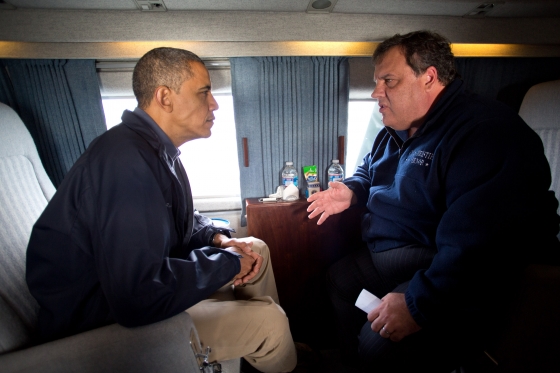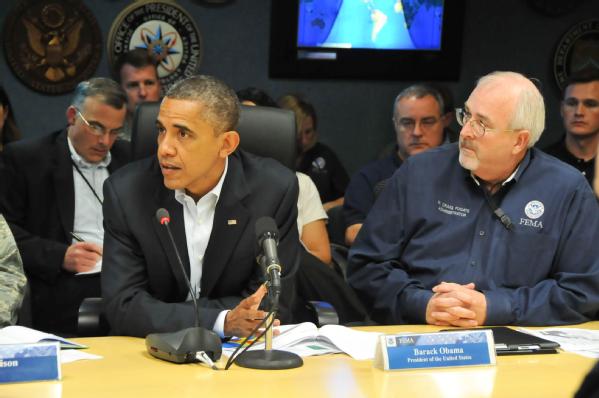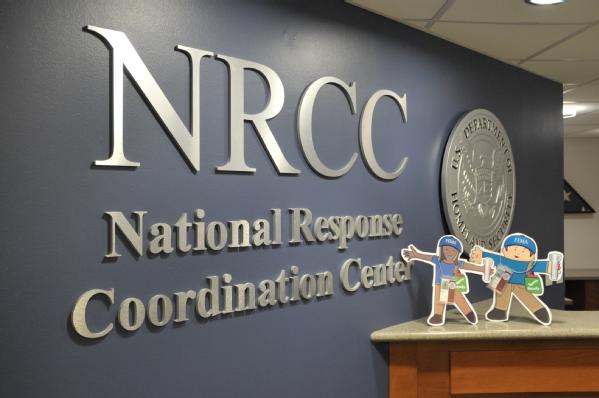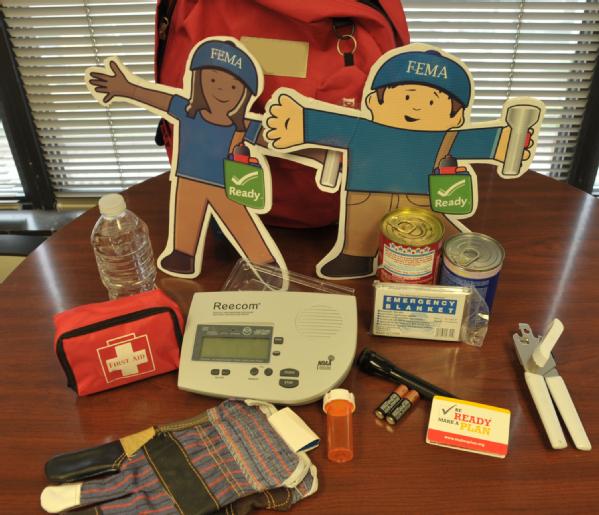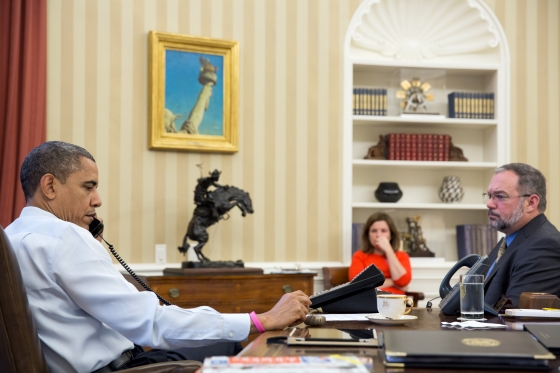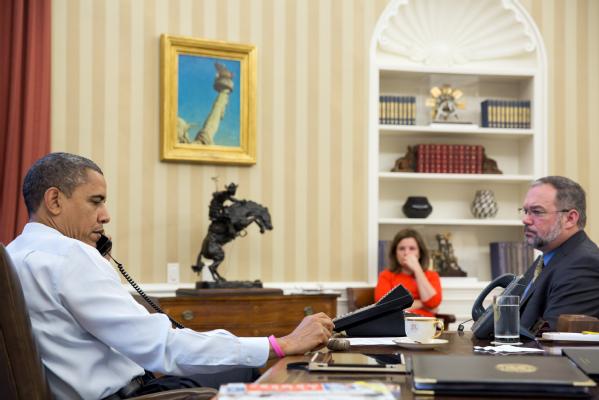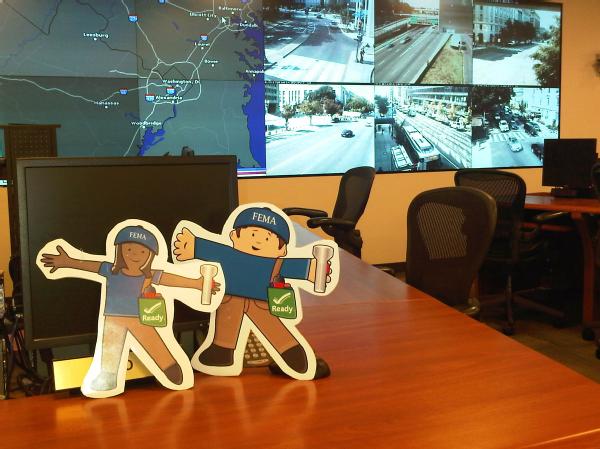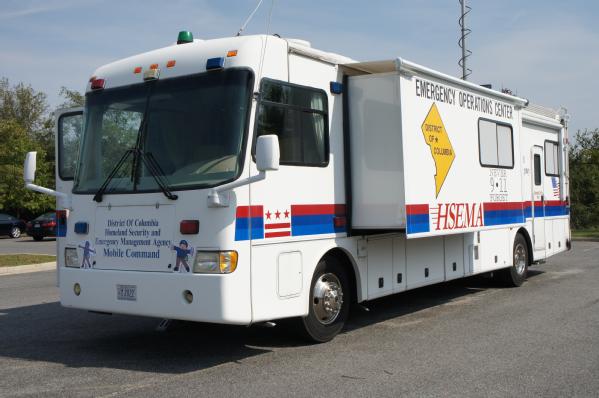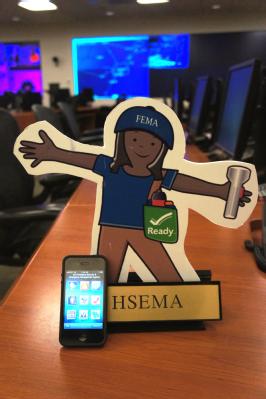At the end of each week, we post a "What We’re Watching" blog as we look ahead to the weekend and recap events from the week. We encourage you to share it with your friends and family, and have a safe weekend.
Hurricane Sandy
 CAPTION: Forecast image from NOAA’s Hydrological Prediction Center, showing possible rainfall amounts over the next five days. This graphic is automatically updated by the Hydrological Prediction Center.
CAPTION: Forecast image from NOAA’s Hydrological Prediction Center, showing possible rainfall amounts over the next five days. This graphic is automatically updated by the Hydrological Prediction Center.
We continue to closely monitor the progress of Hurricane Sandy as it makes its way north in the Atlantic Ocean. At this point in Sandy’s progression, the key message remains that now is the time to
get prepared. From the most recent
National Weather Service forecasts, it’s clear the impacts of the storm will be felt across a wide area. These impacts could include heavy rains and snowfall, flooding, high winds, storm surge and power outages. As the image shows above, forecasters are calling for significant rainfall, which may result in flooding in some areas. We recommend you check the items in your family emergency kit and make sure you have supplies that can sustain you and your family for at least 72 hours:
- canned food,
- a can opener,
- water,
- batteries,
- a flashlight,
- radio & pet food/medicine
In advance of any potential impacts from the storm, FEMA is deploying Incident Management Assistance Teams to North Carolina, Pennsylvania, Delaware, New York, New Jersey, Massachusetts, Connecticut, Vermont, New Hampshire, Rhode Island, and Maine to assist states, should emergency response assistance be needed. In addition, we’re sending staff to emergency operations centers in Maryland, Virginia, the District of Columbia, Pennsylvania, New York, and New Jersey to coordinate if additional support is needed.
Ready.gov/hurricanes has more information on how to get your family, home, or business prepared for the effects of Hurricane Sandy. Follow updates from the National Hurricane Center at
hurricanes.gov for the latest forecast on Hurricane Sandy and
weather.gov for your local weather forecasts.
Think Tank Call on October 30 – Postponed
The FEMA Think Tank scheduled on Tuesday, October 30 in Orlando, Florida has been postponed to allow FEMA leadership and participating emergency management experts to focus on response preparations involving Hurricane Sandy.
We will reschedule the Think Tank titled, “Looking Back, Looking Forward - FEMA Think Tank 2.0” in the near future. The collaborative forum will look at various solutions-based models that have been identified on previous calls and implemented in local communities to advance emergency management. In the looking forward portion of the forum, FEMA will look at the future of the Think Tank and explore new collaborative web tools the emergency management community can use to share resources and best practices.
We encourage you to visit the online forum at
www.fema.gov/thinktank to comment on the ideas we will be discussing in the future or submit your own ideas and comment on others.
Halloween safety tips
While much of the East Coast closely watches Hurricane Sandy, the rest of the country is looking forward to a spooky Halloween next Wednesday, October 31. In addition to the spookiest time of the year, Halloween is historically a time when there is an increase in fires, especially fires related to the use of candles. So as you’re partaking in Halloween preparations, decorating, and trick-or-treating, remember these
safety tips from the U.S. Fire Administration to stay fire safe:
- Avoid using candles inside and out, as they are the most common fire hazard around Halloween. Use a flameless candle in your Jack-O-Lantern – they come in all shapes, sizes, and colors. Pick a few up when you’re at the store this weekend
- When creating a costume, choose materials that will not easily ignite if it comes in contact with heat or flame.
- Wear light-colored, flame retardant, costumes decorated with retro-reflective tape or stickers.
- When purchasing items, make sure that all costumes, wigs and props are labeled flame-resistant or flame-retardant.
From the Photo Library
FEMA Corps in West Virginia

Charleston, W.Va., Oct. 2, 2012 -- WV Federal Coordinating Officer, Dolph Diemont, addresses the newly arrived FEMA Corps teams, Bayou 6 and Summit 3, at the Charleston, WV Joint Field Office (JFO). The 20 members and leaders received a JFO orientation briefing outlining all JFO disaster assistance program areas as background for their assignments at the JFO and the four West Virginia Disaster Recovery Offices.
California Shakeout

Los Angeles, Calif., Oct. 18, 2012 -- FEMA Region IX Administrator Nancy Ward, Lucy Jones of USGS, and Los Angeles Mayor Antonio Villaraigosa demonstrates the Drop, Cover, Hold On process at ShakeOut LA.
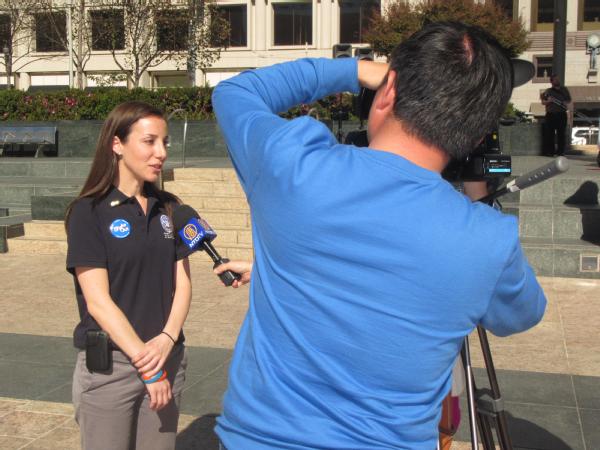
San Francisco, Calif., Oct. 17, 2012 -- FEMA Region IX Earthquake Specialist Jennifer Lynette provides earthquake tips to a reporter from KTSF television, a Cantonese speaking station, during a pre-ShakeOut event in San Francisco's Union Square. FEMA is a supporter of ShakeOut, the largest earthquake drill in the nation.
For those on the East Coast, use the weekend to continue to prepare for Hurricane Sandy and have a safe weekend.
